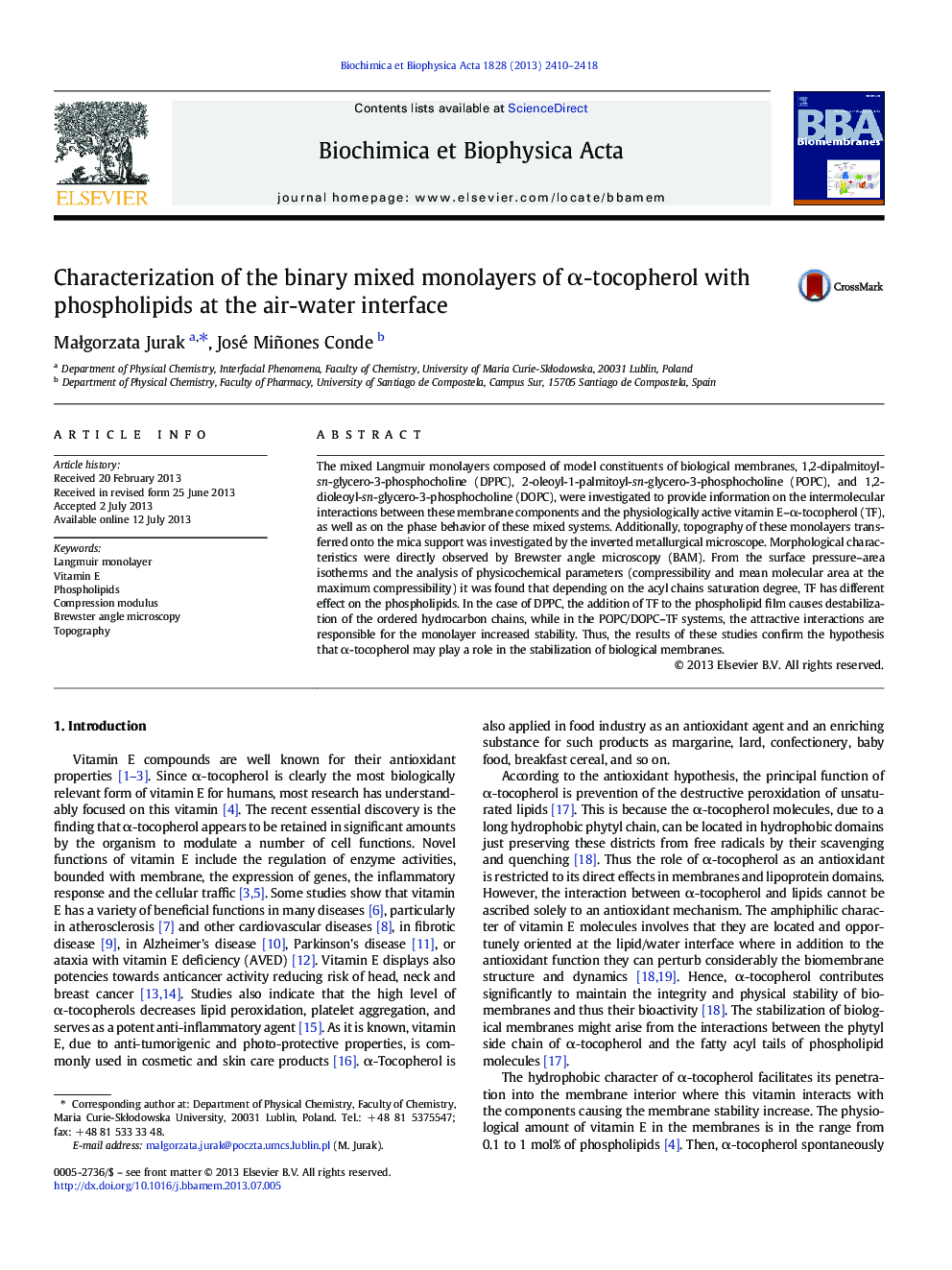| Article ID | Journal | Published Year | Pages | File Type |
|---|---|---|---|---|
| 1944285 | Biochimica et Biophysica Acta (BBA) - Biomembranes | 2013 | 9 Pages |
•Molecular interactions depend mainly on the nature of phospholipid molecules.•Presence of tocopherol (TF) in the phospholipid film decreases its packing and ordering.•Phase diagram for the phospholipid/TF film indicates the complex formation.•TF exhibits the higher affinity for unsaturated phospholipids.
The mixed Langmuir monolayers composed of model constituents of biological membranes, 1,2-dipalmitoyl-sn-glycero-3-phosphocholine (DPPC), 2-oleoyl-1-palmitoyl-sn-glycero-3-phosphocholine (POPC), and 1,2-dioleoyl-sn-glycero-3-phosphocholine (DOPC), were investigated to provide information on the intermolecular interactions between these membrane components and the physiologically active vitamin E–α-tocopherol (TF), as well as on the phase behavior of these mixed systems. Additionally, topography of these monolayers transferred onto the mica support was investigated by the inverted metallurgical microscope. Morphological characteristics were directly observed by Brewster angle microscopy (BAM). From the surface pressure–area isotherms and the analysis of physicochemical parameters (compressibility and mean molecular area at the maximum compressibility) it was found that depending on the acyl chains saturation degree, TF has different effect on the phospholipids. In the case of DPPC, the addition of TF to the phospholipid film causes destabilization of the ordered hydrocarbon chains, while in the POPC/DOPC–TF systems, the attractive interactions are responsible for the monolayer increased stability. Thus, the results of these studies confirm the hypothesis that α-tocopherol may play a role in the stabilization of biological membranes.
Graphical abstractFigure optionsDownload full-size imageDownload high-quality image (241 K)Download as PowerPoint slide
